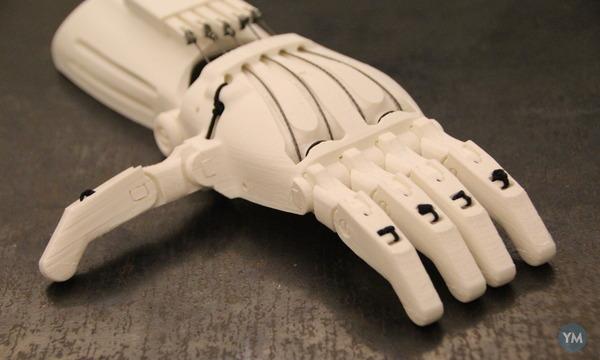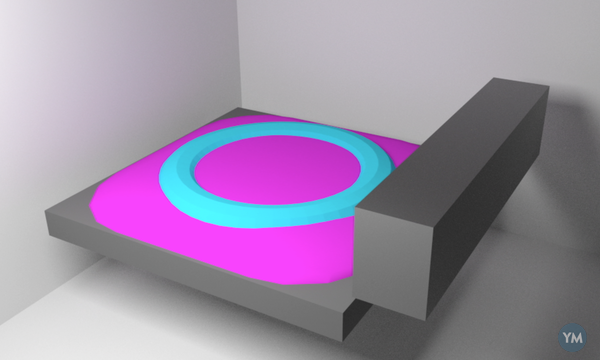YouMagine, a community of makers who help people remix, share, and learn by making 3D printed items, say they’ve decided on a winning entry for their “Develop a New 3D Printing Technology Challenge.”

e-NABLE Raptor hand to be 3D printed with technology from Laird Popkin’s entry, photo courtesy YouMagine
After reviewing the entries for innovation, feasibility, and how achievable the technologies were, the first winner of the contest was Laird Popkin for his “High Speed Large Format 3D Printing with Detail Finish” concept.
Popkin says his idea was aimed at speeding up 3D printing by creating a dual nozzle 3D printer. In this conception, the printer would feature two extruder nozzles — one very large at 1.2mm and a much smaller one of 0.4mm. Popkin then said he’d configure and modify slicer software to use a single perimeter layer of very fine resolution with the small nozzle in 0.1mm to 0.2mm layer heights, and then complete the interior perimeter and infill using the much larger nozzle in 0.5-1mm layer heights.
According to Popkin, he wanted to “make the modifications to the open source slicer software and configurations to optimize print speed and quality for such [a] configuration.”
“Once the software and configuration are validated on standard hardware, my ultimate goal is to ‘hack’ the Ultimaker to support 2x dimensions, for 8x the print volume, in order to be able to extremely rapidly print prosthetics for entire adult limbs in a single print,” Popkin says.
Popkin says he wanted to start with the Gigimaker design for a large format machine.
The contest also want to select “entries (that) would revolutionize 3D printing and be a step change in 3D printing for the desktop 3D printing user.”
The promoters say they tried to choose technologies which weren’t already being implemented within the open source 3D printing community.
It was, of course, ultimately impossible to select just one winner.
It was an entry from a younger maker, Aidan Leitch, who goes by XYZAidan, that received the second of the two top prize Ultimaker Original 3D printers with his “Silicone 3D Printing Process.”
The second winner’s process was an attempt to introduce new materials and a new way of 3D printing. In a nutshell, the second winner proposed a silicone mix for printing. Aidan says that he hopes that one day his process will be capable of extruding the silicone material and having it cure within a 3D printer’s nozzle. Check out the video below in which Aidan expounds upon the idea behind his entry and its potentially game-changing use of materials.
What do you think of these contest winners? Let us know in the 3D Printing Technology Challenge forum thread on 3DPB.com.
Subscribe to Our Email Newsletter
Stay up-to-date on all the latest news from the 3D printing industry and receive information and offers from third party vendors.
You May Also Like
Precision at the Microscale: UK Researchers Advance Medical Devices with BMF’s 3D Printing Tech
University of Nottingham researchers are using Boston Micro Fabrication‘s (BMF) 3D printing technology to develop medical devices that improve compatibility with human tissue. Funded by a UK grant, this project...
3D Printing Webinar and Event Roundup: April 21, 2024
It’s another busy week of webinars and events, starting with Hannover Messe in Germany and continuing with Metalcasting Congress, Chinaplas, TechBlick’s Innovation Festival, and more. Stratasys continues its advanced training...
3D Printing Webinar and Event Roundup: March 17, 2024
It’s another busy week of webinars and events, including SALMED 2024 and AM Forum in Berlin. Stratasys continues its in-person training and is offering two webinars, ASTM is holding a...
3D Printed Micro Antenna is 15% Smaller and 6X Lighter
Horizon Microtechnologies has achieved success in creating a high-frequency D-Band horn antenna through micro 3D printing. However, this achievement did not rely solely on 3D printing; it involved a combination...






























